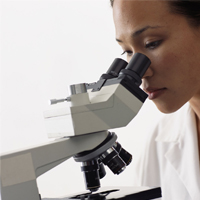
A French scientific team recently reported the discovery of a specific protein in the inner ear that may be linked to hearing in mice and humans.
The research team found that the absence of this protein in the inner ear, or even the impairment of the gene that codes for the protein, leads to crippling deafness in mice and humans. They believe this discovery could allow the development of gene therapy strategies for deafness caused by defects in the gene.
“The goal of our study was to identify which isoform of protocadherin-15 forms the tip-links, the essential connections of the auditory mechanotransduction machinery within mature hair cells that are needed to convert sound into electrical signals,” Christine Petit, Ph.D., lead author of the study and professor at Paris’ Institut Pasteur and College de France, explained to Genetic Engineering & Biotechnology News.
Three different types of the protein protocadherin-15 exist in the inner ear’s auditory sensory cells. However, it’s not clear which protein isoforms are necessary for hearing.
“Our work pinpoints the CD2 isoform of protocadherin-15 as an essential component of the tip-link and reveals that the absence of protocadherin-15 CD2 in mouse hair cells results in profound deafness,” Petit told Genetic Engineering & Biotechnology News.
Petit and her colleagues reported the results of their research study, entitled “The CD2 isoform of protocadherin-15 is an essential component of the tip-link complex in mature auditory hair cells,” in EMBO Molecular Medicine.
Found within the hair bundle, or the auditory sensory cells’ sensory antenna, the tip-link is a bridge-like structure that activates the ion channel responsible for generating electrical signals from sound, when stretched. Sound stimulation creates tension in the tip-link, opens a channel of unknown molecular composition and generates electrical signals and sound perception.
During the study, the researchers engineered mice that lack the CD2 isoform of protocadherin-15 during adulthood. The absence of this isoform led to deafness, but the lack of the other isoforms in mice did not affect their hearing.
“By immunolabeling and both morphological and electrophysiological analyses of postnatal cell-specific conditional knockout mice that lose only this isoform after normal hair-bundle development, we show that Pcdh15-CD2 is an essential component of tip-links in mature auditory hair cells,” the researchers wrote. “The finding, in the homozygous or compound heterozygous state, of a PCDH15 frameshift mutation that affects only Pcdh15-CD2 in profoundly deaf children from two unrelated families extends this conclusion to humans.”
The researchers commented that these results provide necessary information for the “identification of new components of the mature auditory macheno-electrical transduction machinery. This will also serve as a basis for the development of gene therapy for deafness caused by PCDH15 defects.”
If you or someone you know would like to learn more about hearing loss and how to treat it, please feel free to schedule a consultation or contact one of our representatives today!
Call 877-631-9511 for FREE Consultation



